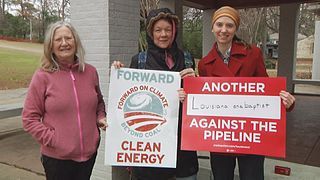Unsustainable: Disappearance of the U.S. Middle Class

But here’s something that also seems broken: (more…)

But here’s something that also seems broken: (more…)

But firstly, I would like to get one thing straight. The small role I play in helping to improve the water management systems of the UK is conducted very much within the heavy engineering and manufacturing sector of the industry. (more…)
Here’s a video just posted on the ARPA-E (Advanced Research Projects Agency – Energy) YouTube video channel, presenting a bit of information on the U.S. Department of Energy’s involvement in smart grid. By design, it’s not very detailed; it covers a great deal of turf in less than five minutes. I’m particularly impressed with the progress that Harvard University is making in flow batteries for large-scale energy storage, and the work being done with power electronics to facilitate high-voltage/current transmission over long distances.


When your car brakes, even if quickly, the system captures that energy and converts it to electricity and stores it in a capacitor. With the i-ELOOP system, the high-capacity electric double layer capacitor’s main component is made of charcoal and doesn’t require heavy or precious metals, making it environmentally friendly in comparison. The active charcoal carries electricity through its micropores through a Using a capacitor instead of a battery extends the life of the electricity held within it by not using chemical reactions to withdraw it, which in turn, promotes a higher fuel economy. Using a variable voltage alternator which generates up to 25V in comparison to the conventional 12V allows for energy to be continually supplied to the capacitor.
This system is a game changer for the automotive and trucking industry’s move toward higher fuel efficiency. Although capturing kinetic energy is nothing new to the automotive industry, Mazda has created a system which seems to be able to do so while also requiring less manufacturing costs with the change in parts composition. If this technology concept carries through commercially, transportation and fleets will see a an overall savings in fuel costs and vehicle longevity. From big rigs to service trucks, fire trucks to rental vehicles, the utilization of kinetic energy through this system and systems which develop in competition with this is one more way to squeeze all that we can out of our fuel resources.


But what about renewable energy, e.g., solar PV. Nothing is burned there, of course, so what do we do here? As it turns out there are two equally correct answers: We can either count the energy content of the electricity generated, or we can ask how much fossil fuel energy would have been required to produce the same amount of electricity.
The author, Robert Wilson, does a really good job explaining a complicated subject.

He writes: “My perspective on this travesty:
“Separation of church and state is separation of church and state. That’s why it’s specifically stipulated within our Constitution that “no religious test shall ever be required as a qualification to any office or public trust under the United States.” (more…)

Geothermal heat pumps are a very popular option that can heat the home in winter, and can work as an air conditioner in winter. This is possible because of the way the system works. Simply reversing the heating process can make the heat pump work as a cooling system. (more…)
The west Brisbane suburb of Chelmer experiences more than its fair share of hot and humid days which, when combined with rising electricity prices, make eco-friendly homes designs a priority for most home owners. And it is for this reason that the owners of this particular property chose to have Dion Seminara Architecture design their home renovation. (more…)